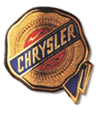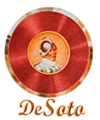Winter is Here… What Do YOU Want to Accomplish On Your Vintage Chrysler, Plymouth Dodge or DeSoto before Spring?
 Of course, for all you lucky folks in the sun belt, or who have toasty heated workshop/garages you can disregard this concept. But for the rest of us, it’s time, go start whittling away at that “to do list” if we want to get it done this year for Spring driving.
Of course, for all you lucky folks in the sun belt, or who have toasty heated workshop/garages you can disregard this concept. But for the rest of us, it’s time, go start whittling away at that “to do list” if we want to get it done this year for Spring driving.
On the 1948 Chrysler New Yorker I’m a little worried about the feel of the brake pedal…is it getting a little spongy? Not as firm as it once was? Maybe that last relaxing drive right after New Year’s weekend go something leaking…anyway no putting that one off. Need to check the master cylinder, stop light switch, wheel cylinders and brake hoses.
Another thing I want to do on the big New Yorker is break out my recently purchased Amco tool and get the brakes adjusted correctly. The big “8” stops pretty well but without dialing it in with the Amco I know there is more stopping power to be had. Gotta get to that one.Read More








 If you’ve been in the classic Mopar game for a long time or are brand new to it, you are probably fascinated with stories of fantastic barn find cars that are often rescued from decades of long term storage.
If you’ve been in the classic Mopar game for a long time or are brand new to it, you are probably fascinated with stories of fantastic barn find cars that are often rescued from decades of long term storage. 